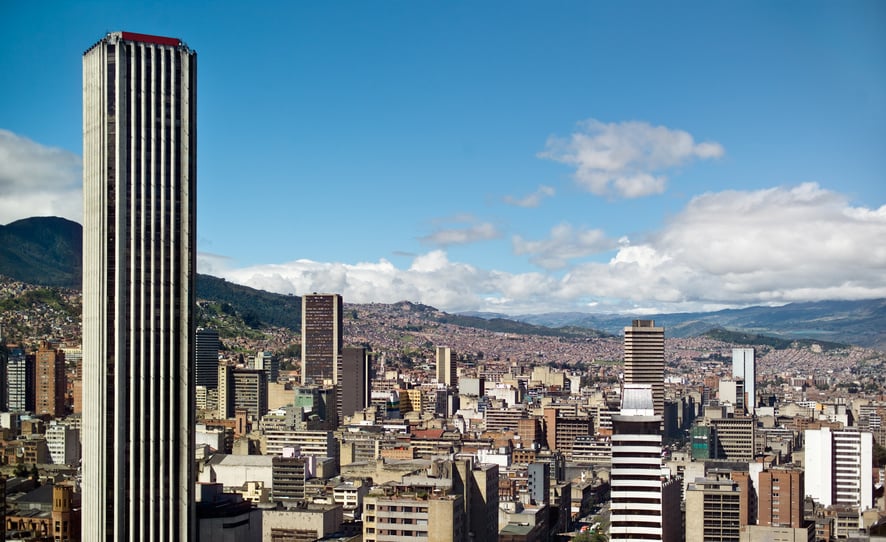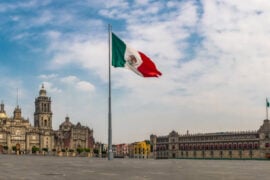In brief
The Climate Action Law sets out a catalog of governmental actions that involve all actors of the Colombian economy.
It outlines the agenda for compliance with international commitments acquired by the Paris Agreement to achieve carbon neutrality by 2050.
In this alert, we identify the opportunities and obligations to be followed.
Contents
- Key takeaways
- In detail
- Mines and Energy
- Housing, City and Territory
- Agriculture
- Trade, Industry and Tourism
- Transportation
- Environment and Sustainable Development
- Private sector participation
- Regarding the development of carbon markets
- Other measures
Key takeaways
With this law, the Colombian Government outlines the transition agenda headed to carbon neutrality and climate resilience through 16 pillars, of which the following are highlighted:
- Labor sustainability through the creation of environmentally friendly jobs
- Co-responsibility and goals for governmental entities (central and territorial) are set; private sector parties are specially included
- It highlights the transition toward carbon neutrality and climate resilience, seeking to advance the fulfillment of the Sustainable Development Goals (SDGs)
- It emphasizes on increasing education campaigns.
There are sectoral goals, ranging from 2022 to 2030, with the following being the most important:
- Colombia will seek to be carbon neutral by 2050
- CO2 emissions will be reduced by 51% by 2030
- Thirty percent of protected territories will be secured by 2022
- Carbon budgets are established for the period of 2020 to 2030
- Black carbon emissions will be reduced by 40% by 2030
- Net deforestation of natural forest will be reduced to 0 hectares/year by 2030.
In detail
The law establishes five greenhouse gas (GHG) mitigation goals, as well as sectoral goals for the following sectors:
- Housing, City and Territory (five goals in relation to water and its treatment)
- Health and Social Protection (two related to the reduction of climate-related diseases)
- Mines and Energy (three goals aimed at sectoral planning for the hydrocarbon, coal mining and electric power subsectors)
- Transportation (five goals to ensure sustainable and green development of the sector)
- Agriculture, Fishing and Rural Development (five goals aimed at food insurance and adaptation of the agricultural industry)
- Environment and Sustainable Development (the largest, with 20 goals that encompass the coverage, maintenance and recovery of its components).
The following are the main sectoral measures (ranging from 2022 to 2030) set out to reduce and prevent GHGs emissions, and increase their sustainability:
Mines and Energy
- Produce additional energy efficiency actions
- Introduce adequate management of fugitive emissions in the hydrocarbon chain
- Review that difference in electricity consumption between peak and off-peak hours
- Boost generation and self-generation with Non-Conventional Renewable Energy Sources
- Stimulating the conversion of coal generation to cleaner energies.
Housing, City and Territory
- Reducing final disposal of potentially usable waste
- Revitalizing sanitary landfills and biogas capture and/or burning systems
- Promote energy reconversion of the sanitary vehicle fleet
- Improve management of domestic wastewater
- Sustainable buildings in terms of energy and water use
- Setting Criteria for sustainable urban development.
Agriculture
- Increasing GHG removal through in forests and crops
- Efficient use of fertilizers
- Education and prevention of deforestation and sustainable agriculture
- Use of biomass for biofuel and bioenergy production.
Trade, Industry and Tourism
- Promoting energy efficiency in industries
- Initiate Transition to more efficient technologies, equipment and practices
- Boost the Transition into low carbon economies
- Set sustainable logistics actions.
Transportation
- Accelerating electric mobility (at least 600,000 electric vehicles)
- Seek for price parity between electric and conventional vehicles
- Modernization of the freight vehicle fleet
- Promoting air navigation based on aircraft performance
- Strengthening river navigability with the Magdalena River PPP project
- Promoting the rehabilitation of the railroad infrastructure and its cargo transportation
- Implementing Active Mobility (human being as a motor)
- Optimal land use based on sustainable transportation
- Promoting the use of sustainable aviation fuels.
Environment and Sustainable Development
- One million hectares of non-timber forest accumulated by 2030
- Installation of one million efficient wood-burning stoves
- Promote reduction of ozone depleting products (HFCs)
- Good practices and efficient use of energy resources by end users
- Calculate of GHG mitigation in Colombian ecosystems
- Natural Conservation Contracts for the sustainable management of 2.5 million hectares
- Development of early detection of forest fires
- Implementation of circular economy strategies
- Regulating the collection and management of hazardous mass consumption products
- Formulation of Nature-Based Solutions programs and projects.
Private sector participation
- Increased private sector participation will be promoted by highlighting successful cases, voluntary agreement schemes and zero deforestation, among others
- Mandatory reporting of emissions in the GHG Emissions Report (ROE) will be administered by the Ministry of Environment
- Biotic offsets may only be registered as GHG mitigation initiatives once the environmental license commitments have been fulfilled
- The 30% quota of natural gas vehicles will be waived to transportation providers that acquire fleets of electric and/or hydrogen vehicles
- Eligible properties may be recognized as conservation areas
- An environmental leaders protection and monitoring system will be created.
Regarding the development of carbon markets
- An national inventory of GHG emissions will be prepared
- The National Registry of Reduction of Emissions and Removal of Greenhouse Gases (RENARE) will be created in order of enabling transactions in carbon markets
- The National Climate Change Information System is created as an instrument for mandatory consultation in the decision-making on this matter
- A study commission will be created to promote and develop carbon markets in Colombia, as well as to generate recommendations for its development
- The Low Carbon Development Implementation and Follow-up Plan is created to follow up on the goals established within this law.
Other measures
- The National System of Conservation Areas is created
- Green Hydrogen Projects will be considered of public utility and social interest
- The National Registry of Deforested Areas is created
- Two Funds for Technological Advancement of freight transportation (Capital District and National) are created
- The Special Carbon Tax is modified, with equal allocations to mitigation and prevention of environmental deterioration and substitution of illicit crops.
You may view the full text of Law 2169 of 2021 here – or contact us for more information.




